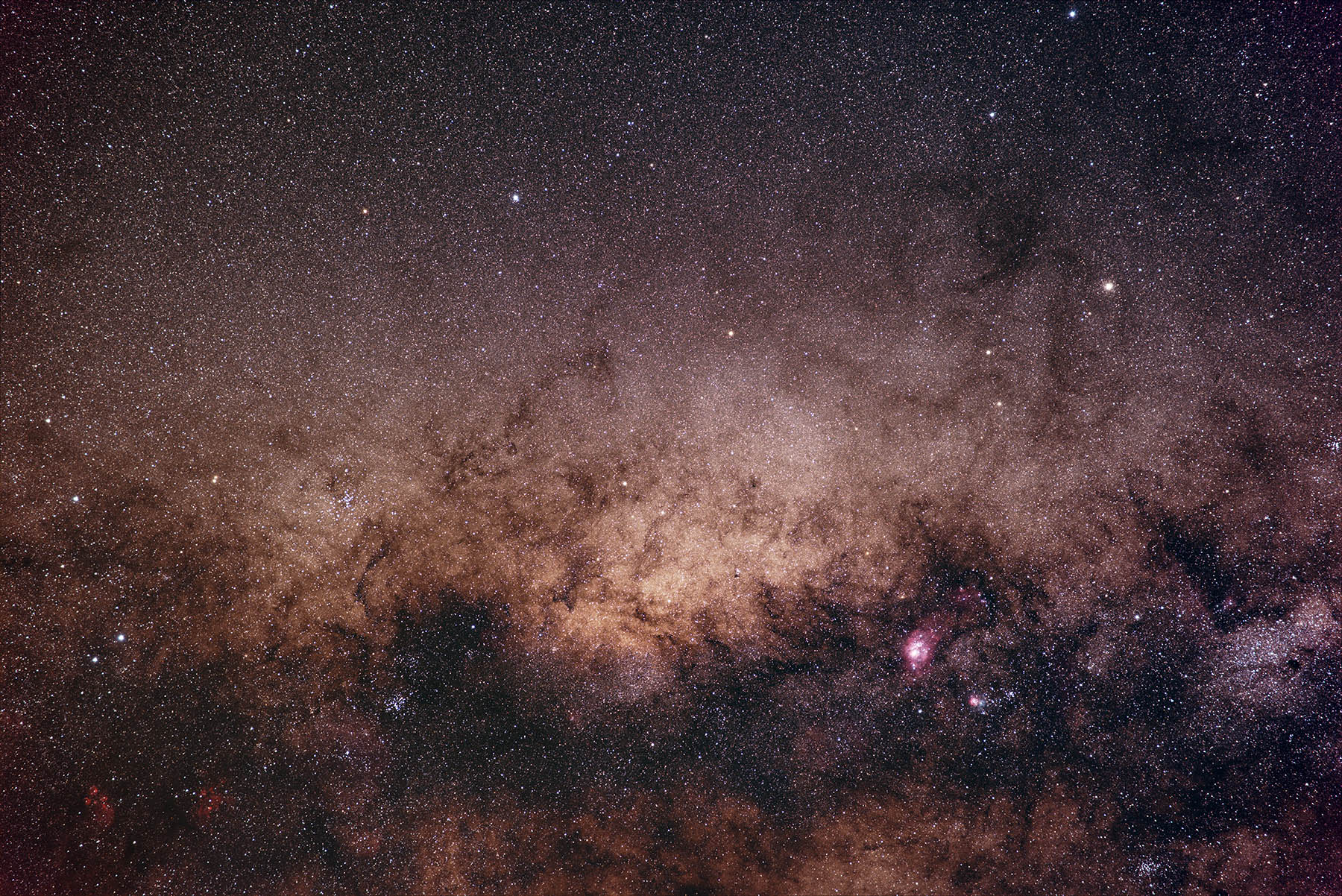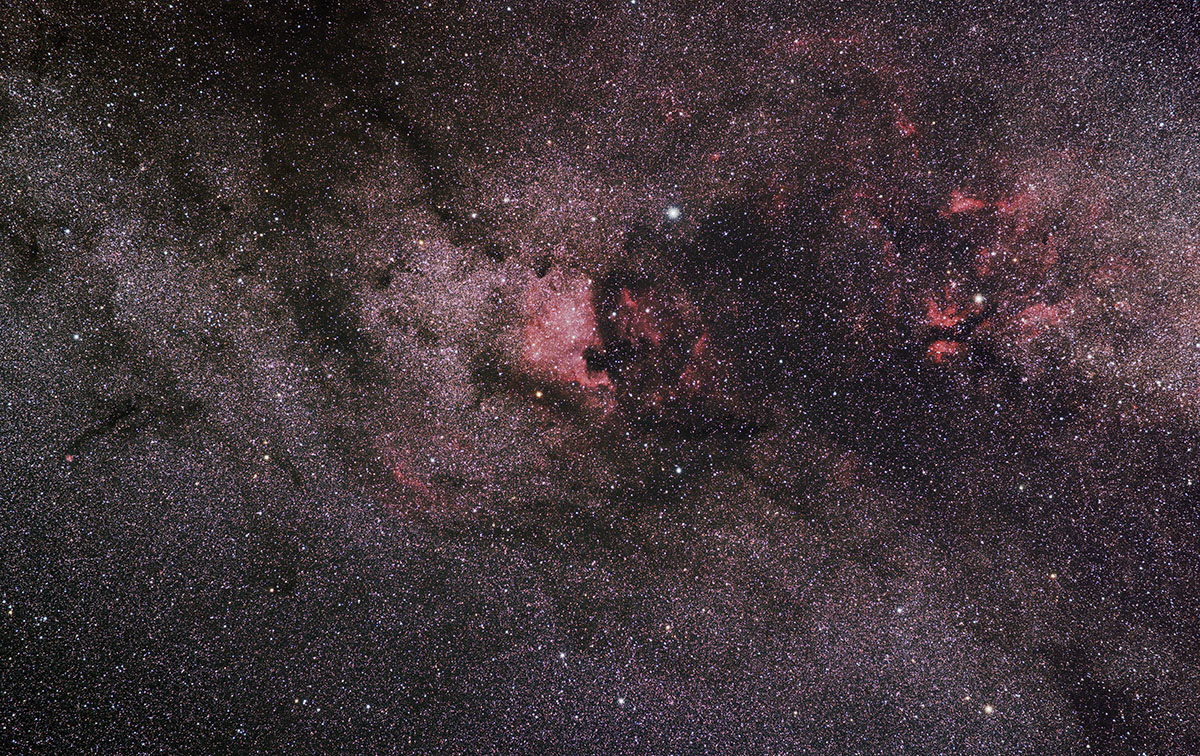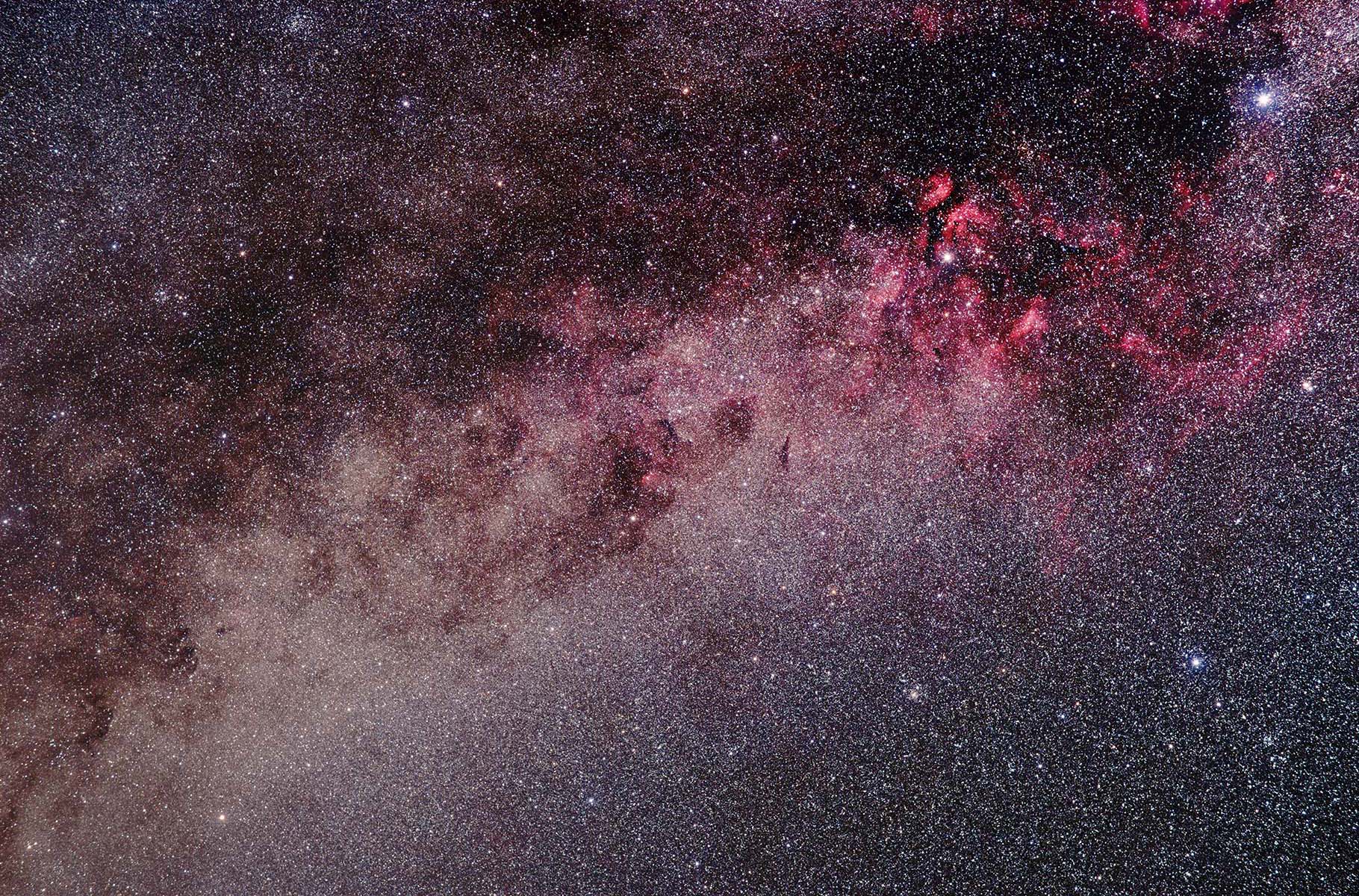
Nikon D810A & the Andromeda Galaxy M31
Canon held the advantage over Nikon for night sky and astrophotography for many years. That has changed. See Alan Dyer's article here. I've moved most of the daylight D810A pictures & discussion to this page. I have created a Yahoo Group dedicated to the D810A, please join if you're a D810A owner! Here's a review of the D810A the Luminous Landscape by Alan Dyer. This page has info about flat-fielding problems with ImagesPlus and the Nikon D810A.


D810A and Zeiss 135mm Pictures Here

Huge Double Cluster D810A Picture Here

Milky Way, Sigma Art 50mm Lens

This is 55 minutes total exposure (11*5min) with the Nikon Nikkor 85mm f1.8 lens at f3.5 and ISO 800. I haven't had a chance to tackle the gradient or slight flat-fielding issues but I wanted to get something posted. This is ever-so-slightly trimmed from the final stack, maybe 10 pixels, to clean up the edges. Reduced (flats and darks) and converted to .tif in ImagesPlus, stacked in Registar, final processing in Photoshop CS6. My current image processing workflow is here.
For additional details and identification of some of the objects shown: More from the Southern Milky Way is on my page dedicated to that area here.

This is from the Fall 2015 trip to the Starry Nights B&B in Wimberley TX. It shows the North American Nebula & Pelican Nebula areas in the middle, with the Butterfly Nebula area to the right. Image Details: Nikon D810A camera, Nikon 85mm f1.8 lens at f4.5, about 3 hours total exposure (35 * 5 minutes). My current image processing workflow is here.

Another image from the Fall 2015 trip to the Starry Nights B&B in Wimberley TX. It shows the Butterfly Nebula area to the mid-right, along with a lot of interesting detail including dark nebula and countless stars. The bright blue star extreme upper right is Deneb, and above that you can just make out part of the North American Nebula complex. The entire area is awash with glowing red clouds of ionized gas. Image Details: Nikon D810A camera, Nikon 85mm f1.8 lens at f4.5, 85 minutes "piggy back" on the telescope (17*5) total exposure. I processed and stacked this image in the .dng format. My current image processing workflow is here.
The above is copied from my September 2015 West Texas Trip page, here...

Camera control and processing options for the Nikon D810A as of 8/25/15:
ImagesPlus 6.5 x64 (or above, eventually) with 6.0 Camera Control
digiCamControl (free!)
Various statistics on the D810A:
35.9 x 24.0 mm CMOS sensor
FX format (36x24): 7360 x 4912
Approx. 980 g/2 lb 2.6 oz with battery and SD memory card but without body cap; approx. 880 g/1 lb 15.1 oz (camera body only)
Info below from my equipment page
| Scope | f | len mm | ST-8300x | ST-8300y | ST-8300 arc sec pix | ST-8300 bin 2x2 | ST-8300 bin 3x3 | QHY8 x | QHY8 y | QHY8 aspp | 20Dax | 20day | 20Da aspp | D810A x arcmin | D810A y arcmin | D810A aspp |
| Toa 130 1.6x Extender | 12.3 | 1600 | 29 | 38.7 | 0.70 | 1.40 | 2.10 | 34 | 51 | 1.01 | 32.2 | 48.3 | 0.82 | 77.1 | 5.16 | 0.64 |
| TOA 130 Flat | 7.7 | 1000 | 46 | 62 | 1.11 | 2.23 | 3.34 | 55 | 80 | 1.61 | 52 | 77 | 1.32 | 123.4 | 82.5 | 1.03 |
| TOA 130 Reducer New | 5.369 | 698 | 67 | 88 | 1.60 | 3.19 | 4.79 | 117 | 77 | 2.30 | 68 | 102 | 1.89 | 176.3 | 117.9 | 1.47 |
| TOA 130 Reducer Old | 5.8 | 754 | 62 | 82 | 1.48 | 2.95 | 4.43 | 72 | 106 | 2.13 | 68 | 102 | 1.75 | 163.6 | 109.4 | 1.36 |
| Baby Q | 5.3 | 450 | 103 | 137 | 2.48 | 4.95 | 7.43 | 119 | 181 | 3.58 | 121 | 182 | 2.93 | 274.3 | 183.4 | 2.28 |
| Baby Q Reducer | 3.86 | 328 | 142 | 189 | 3.40 | 6.79 | 10.19 | 164 | 249 | 4.92 | 157 | 236 | 4.02 | 376.3 | 25.6 | 3.13 |
| Cameras | pix w | pix h | img. Cir | pixel size | width mm | height mm | area sq mm | Delta QHY8 |
| QHY8 | 3032 | 2030 | 28.4 | 7.8 | 23.7 | 15.6 | 370 | 100% |
| 20Da | 3504 | 2336 | 27.0 | 6.4 | 22.5 | 15.0 | 338 | 91% |
| ST-8300 | 3326 | 2504 | 22.5 | 5.4 | 18.0 | 13.5 | 243 | 66% |
| D810A | 7360 | 4912 | 43.2 | 4.97 | 35.9 | 24.0 | 861.6 | 862 |
Above Updated 8/24/14 with the TOA 130 new reducer info, and July 2015 for the D810A Camera.
Here's a review of the camera from the Luminous Landscape by Alan Dyer.